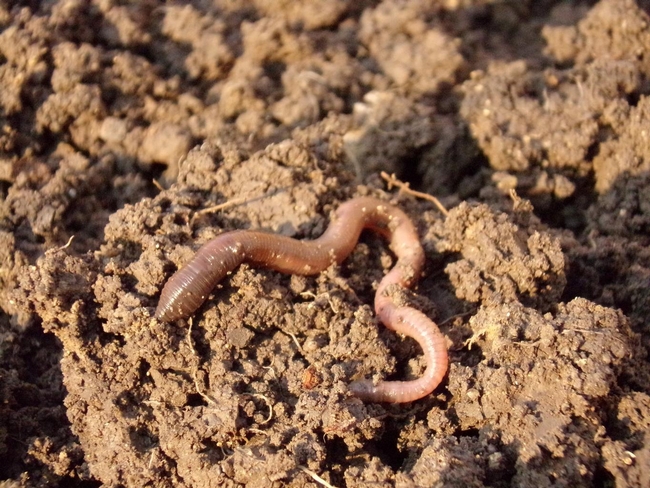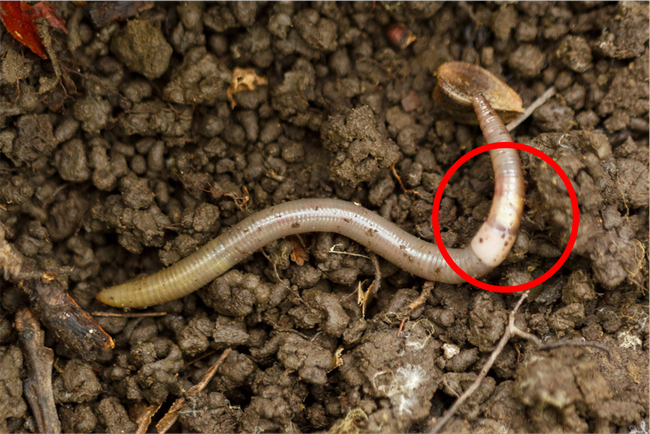The jumping worm, Amynthas agrestis, is an invasive earthworm capable of harming native forests that has been recently reported in some areas of California. This pest devours leaf litter and other organic matter, changing soil texture and nutrient availability to a point where some plants may be unable to survive. Its feeding can lead to a decline in diversity and population of native plants and other organisms within forests.
Although these worms are native to eastern Asia, they have been detected in dozens of states; including Massachusetts, New York, Wisconsin, and Minnesota. Jumping worms have since moved west to Washington and Oregon and were detected in California in 2021. The California Department of Food and Agriculture (CDFA) has labeled the jumping worm as an A-rated pest, meaning it can cause economic or environmental harm if it becomes established in the state.
In nurseries, any jumping worms that are present are likely to be found underneath pots sitting on the ground or on landscape fabric. In forests, they tend to be near the surface, just under accumulations of leaf litter, unlike other earthworms.
How do you know if it's a jumping worm?
The jumping worm, also called the crazy worm or snake worm, can be distinguished from other earthworms by a milky-white band (the clitellum) wrapping all around and flush with its body near the head as well as its characteristic “jumping” when disturbed. Jumping worms have been known to propel themselves off the ground and thrash when disturbed, almost like a provoked snake. Jumping worms are firm, smooth, and glossy, but not slimy. They are dark gray or brown in color, darker than other earthworms. This darker pigmentation helps protect them from sunlight since they live closer to the surface than do other species. Adult jumping worms are usually 4-5 inches long, tend to occur in large numbers, and are most noticeable in late summer or early autumn when most are fully mature. In the fall, adults produce cold and drought resistant cocoons (a hardened egg capsule) before dying. One worm can produce many cocoons without mating. The next generation of jumping worms overwinters in these mustard seed-sized cocoons, which hatch and develop into new worms in the spring.

How do jumping worms spread?
Jumping worms live in leaf and plant litter. The tiny egg cocoons look like small bits of dirt so can easily be moved by raking leaves or by transporting mulch, potting mixes, and potted plants. Jumping worms can be spread to natural areas on soil particles attached to hiker's boots, through movement of plant material sold by nurseries where the worm exists, or even by anglers if they use adult jumping worms as fish bait.
Prevent the spread of the jumping worm
Prevention is by far the best approach to managing jumping worms. Don't buy or use jumping worms for fishing bait, vermicomposting, or gardening. Learn how to recognize jumping worms and pass along the knowledge. Check new mulch, compost, and soil for evidence of jumping worms. Before you buy new plants, take a close look at the potting soil. If jumping worms are present, you will see their telltale, coffee ground-like castings on the soil surface. Buy bareroot plants whenever possible. When gardening, keep an eye out for jumping worm adults and their castings.
What if you find jumping worms?

If you discover jumping worms, contact CDFA or your local agricultural commissioner's office to report the finding. If the CDFA confirms the worms are jumping worms, work with them to focus on preventing the spread of the worm. Don't move materials such as compost, mulch, topsoil, or plants known to have jumping worms to new locations. Always clean dirt and debris off your equipment and shoes before leaving an area infested with jumping worms. Dispose of all contaminated soil and castings in the trash. Kill worms by freezing or leaving them in a plastic bag out in the sun, then discarding.
Jumping worms and their cocoons are unable to survive temperatures above 40°C (104°F). Increasing soil temperatures above this threshold for three days through soil solarization is one way to manage jumping worm populations. Be aware that re-infestation of the area may occur due to cocoon presence in areas beyond the treatment zone. Soil used for potting can be temporarily placed in plastic bins and exposed to direct sunlight.
Do not try to control jumping worms with pesticides. There are currently no registered pesticide products for this pest. Using pesticide products not intended or labeled for the jumping worm is illegal and can kill beneficial earthworms and cause harm to the environment.
Further Reading
https://ag.umass.edu/landscape/fact-sheets/jumpingcrazysnake-worms-amynthas-spp
https://blogs.cdfa.ca.gov/Section3162/wp-content/uploads/2021/12/Amynthas-agrestis_ADA_PRP.pdf
https://hort.extension.wisc.edu/articles/jumping-worms/
https://www.invasivespeciesinfo.gov/terrestrial/invertebrates/asian-jumping-worm
[Originally featured in the Spring 2023 issue of UC IPM's Home & Garden Pest Newsletter.]
